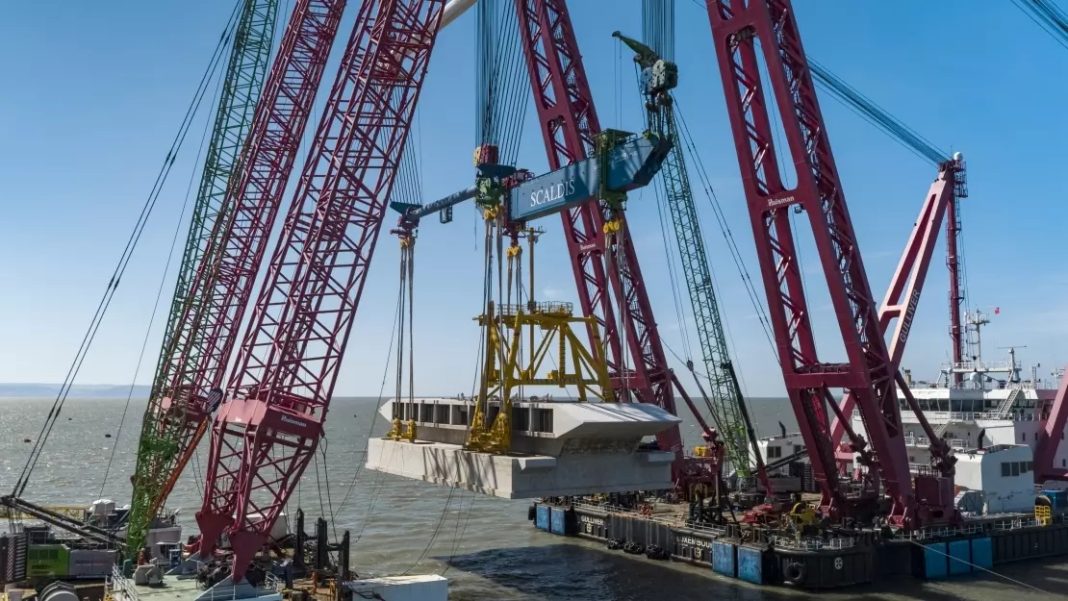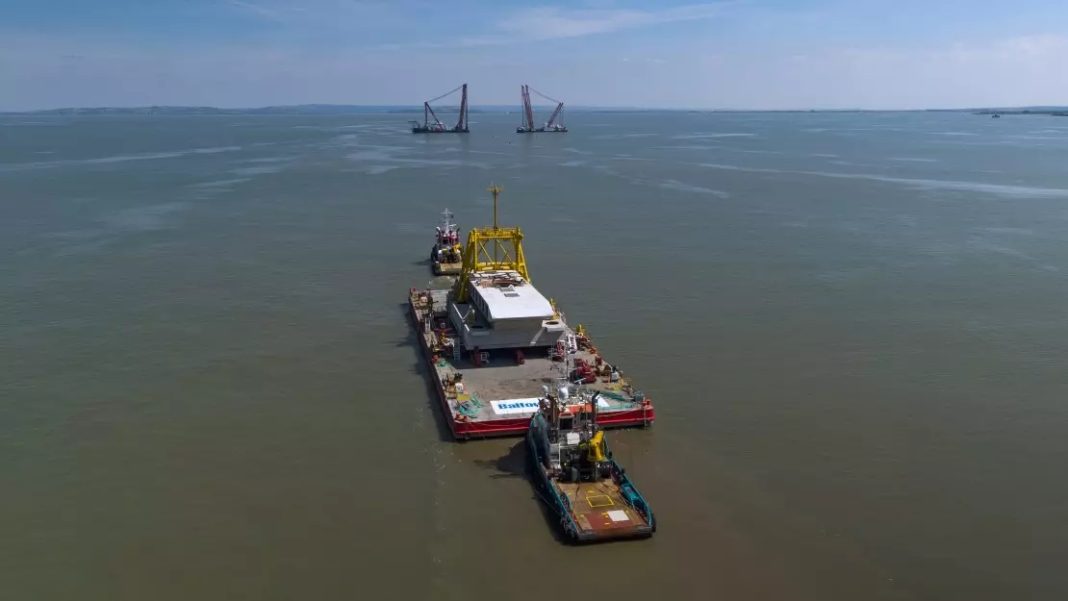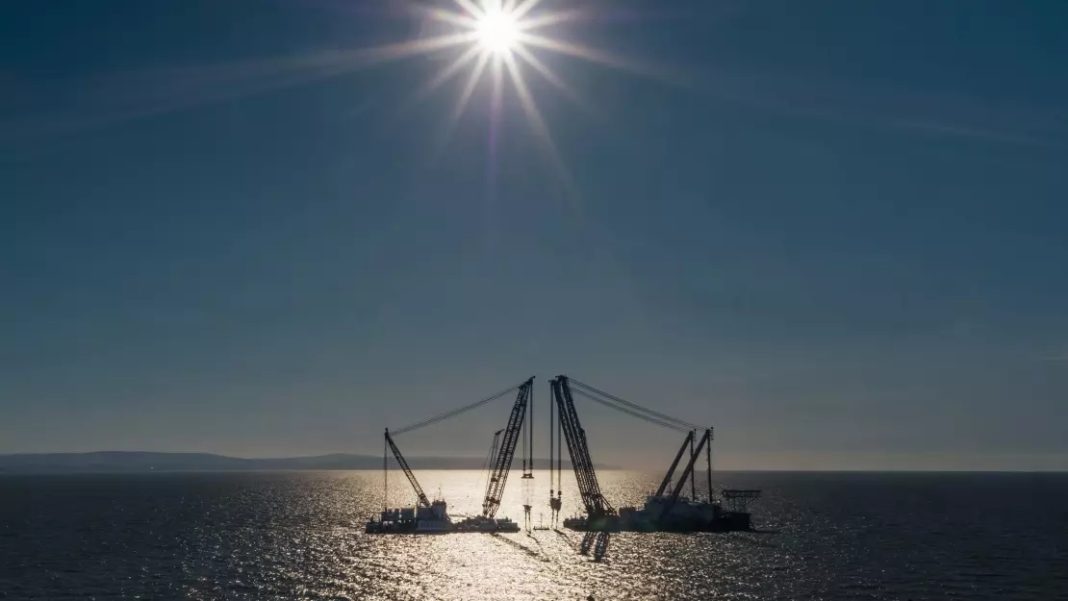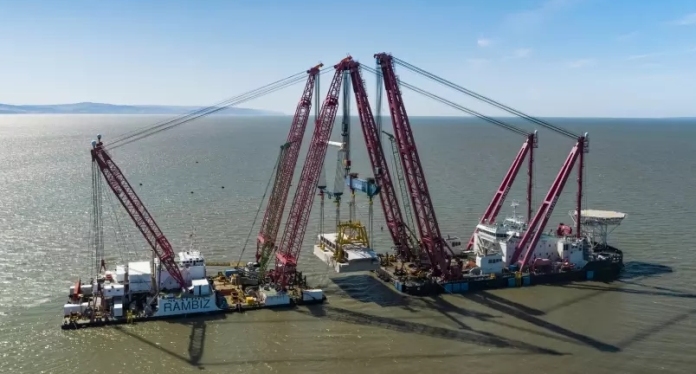Work to create a Hinkley Point C new water cooling system on the seabed of the Bristol Channel near Burnham-On-Sea has taken a major step forward this week.
The EDF team has been undertaking the precision placement of a 5,000-tonne water intake head onto the seabed, as pictured here and featured in video below.
“The structure is the second of four intake heads being connected to 5 miles of tunnels, which will supply Hinkley Point C’s two nuclear reactors with cooling water,” says an EDF spokesman. “The two outfall heads have already been lowered into position.”
He adds: “The work to install the system is regarded as one of the world’s most complex marine engineering projects – as the Bristol Channel has the second highest tidal range on the planet.”
“Each intake head, at 44 metres long and 8 metres high, is being lifted into position by two floating cranes named Gulliver and Rambiz, working in tandem.”
“Their platforms are the size of football pitches and have a combined lifting capacity of 7,300-tonnes.”

“The heads have been built by Balfour Beatty in Avonmouth, in Bristol, and are being transported to Hinkley Point C on barges.”
“The lifting at sea, carried out by marine construction specialists, NewWaves Solutions, takes several days, due to each step taking place within 6-hour tidal windows.”
“Hinkley Point C is the first power station in the Southwest to have fish protection measures in place, including the low velocity heads, a fish return system, and screens.”

“The heads are accurately placed sideways to the tidal flow with a very high degree of precision.”
“This helps prevent fish entering the cooling system and the size of the intakes heads slows the flow of water on either side, allowing nearby fish to swim away.”
The work to install all six heads will continue into the early autumn.








